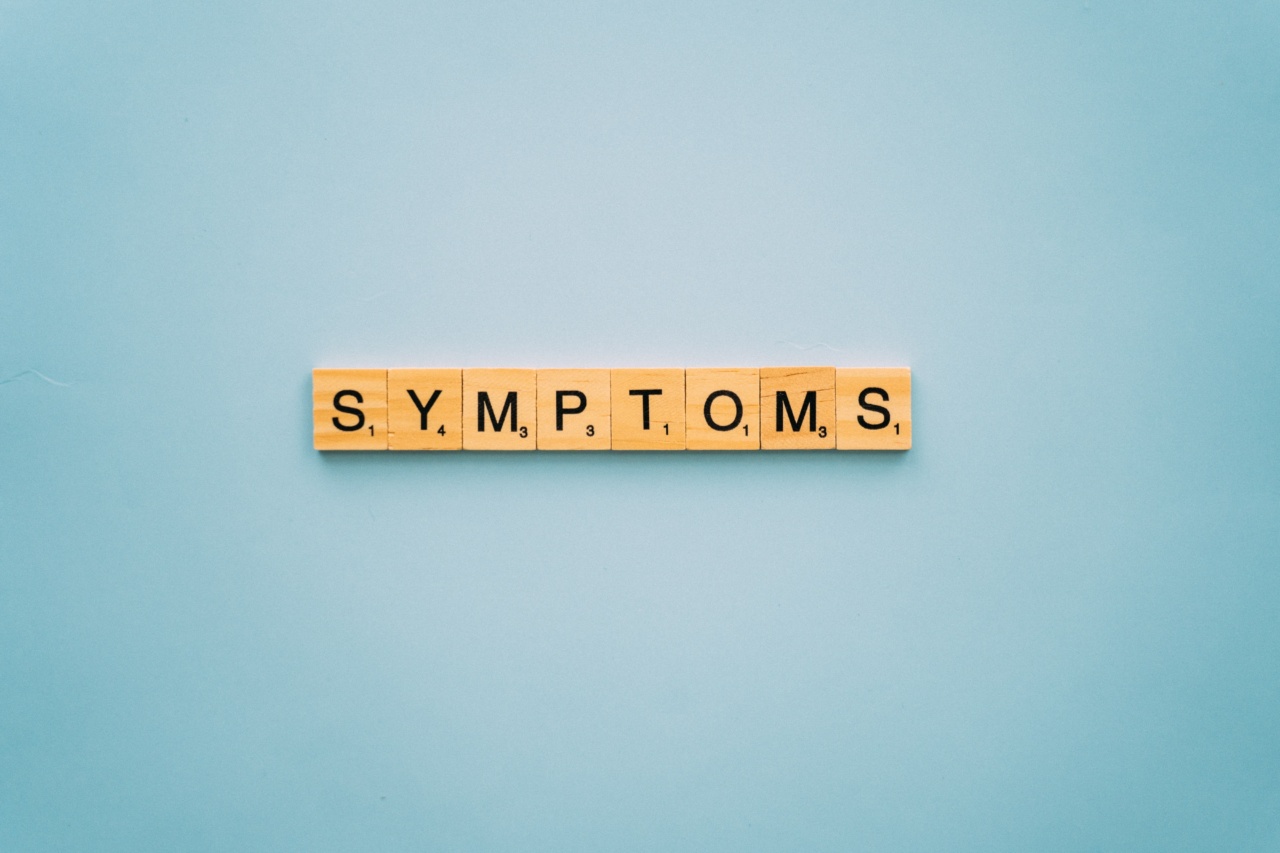Potassium is an essential mineral that plays a vital role in the functioning of many organs in our body. It helps in regulating the heartbeat, fluid balance, and nerve impulses.
Potassium also works in conjunction with sodium to maintain healthy blood pressure levels. However, not consuming enough potassium-rich foods or chronic illnesses can lead to potassium deficiency, which can cause a variety of symptoms. In this article, we will discuss the signs and symptoms of potassium deficiency and ways to prevent it.
What is potassium deficiency?
Potassium deficiency, or hypokalemia, occurs when the amount of potassium in the blood is abnormally low. Normal potassium levels range from 3.5 to 5.0 millimoles per liter (mmol/L) of blood.
When the levels drop below 3.5 mmol/L, it can lead to mild to severe symptoms.
Causes of potassium deficiency
There are several reasons why someone may develop potassium deficiency, including:.
1. Inadequate intake
Not consuming potassium-rich foods like bananas, avocados, spinach, sweet potatoes, and tomatoes can lead to a deficiency. Poor dietary choices or following a low-carb or restrictive diet can also contribute to low potassium levels.
2. Certain medications
Certain medications like diuretics, laxatives, and steroids can cause an increase in urine output, leading to potassium loss. Other drugs like insulin, antibiotics, and some blood pressure medications can also cause potassium deficiency.
3. Chronic illnesses
Chronic illnesses, such as kidney disease, gastrointestinal disorders, and heart failure, can also lead to potassium deficiency. In such cases, the body may not be able to absorb or retain enough potassium, or it may lose more than normal.
4. Excessive sweating
Excessive sweating, especially during intense physical activity or in hot weather, can lead to potassium loss through sweat.
Signs and symptoms of potassium deficiency
1. Weakness and fatigue
One of the most common symptoms of potassium deficiency is fatigue and weakness. This occurs because potassium plays a vital role in muscle function and nerve impulses.
A lack of potassium can make it harder for muscles to contract and relax, causing weakness and fatigue.
2. Muscle cramps and spasms
Potassium also helps in regulating muscle contractions. Low potassium levels can cause muscle cramps and spasms, especially in the legs and feet. These cramps may be painful and can last for a few seconds to several minutes.
3. Heart palpitations and irregular heartbeat
Potassium helps in regulating the heartbeat and maintaining healthy blood pressure levels. Low potassium levels can cause an irregular heartbeat, palpitations, or even a heart attack in severe cases.
4. Constipation and bloating
Potassium deficiency can lead to digestive problems like constipation and bloating. Potassium helps in maintaining proper digestive function and reduces the risk of constipation and bloating.
5. Numbness and tingling sensations
Potassium deficiency can also cause numbness and tingling sensations, especially in the hands, feet, and legs. This occurs because potassium plays a vital role in nerve function and transmitting nerve impulses.
6. High blood pressure
Potassium works in conjunction with sodium to regulate blood pressure levels. Low potassium levels can cause sodium levels to increase, leading to high blood pressure.
7. Mood changes
Potassium deficiency can also cause mood changes like irritability, anxiety, and depression. This occurs because potassium plays a vital role in brain function and neurotransmitter synthesis.
Prevention and treatment of potassium deficiency
The recommended daily intake of potassium for adults is around 2,500 to 3,500 mg per day. However, this can vary depending on age, activity level, and other medical conditions.
Eating a diet rich in potassium-rich foods like bananas, avocados, spinach, sweet potatoes, and tomatoes can help prevent potassium deficiency. It is also essential to avoid excessive sweating and stay hydrated during physical activity or hot weather.
In cases of severe potassium deficiency, supplements may be prescribed by a doctor. However, these should be taken only under medical supervision, as potassium supplements can cause side effects like nausea, vomiting, and diarrhea.
It is also crucial to treat any underlying medical conditions that may be causing potassium deficiency.
Conclusion
Potassium is an essential mineral that plays a vital role in the functioning of many organs in our body. Potassium deficiency can cause a variety of symptoms, including weakness, muscle cramps, irregular heartbeat, and digestive problems.
Consuming a diet rich in potassium-rich foods and staying hydrated can help prevent potassium deficiency. It is also crucial to treat any underlying medical conditions that may contribute to low potassium levels.





























